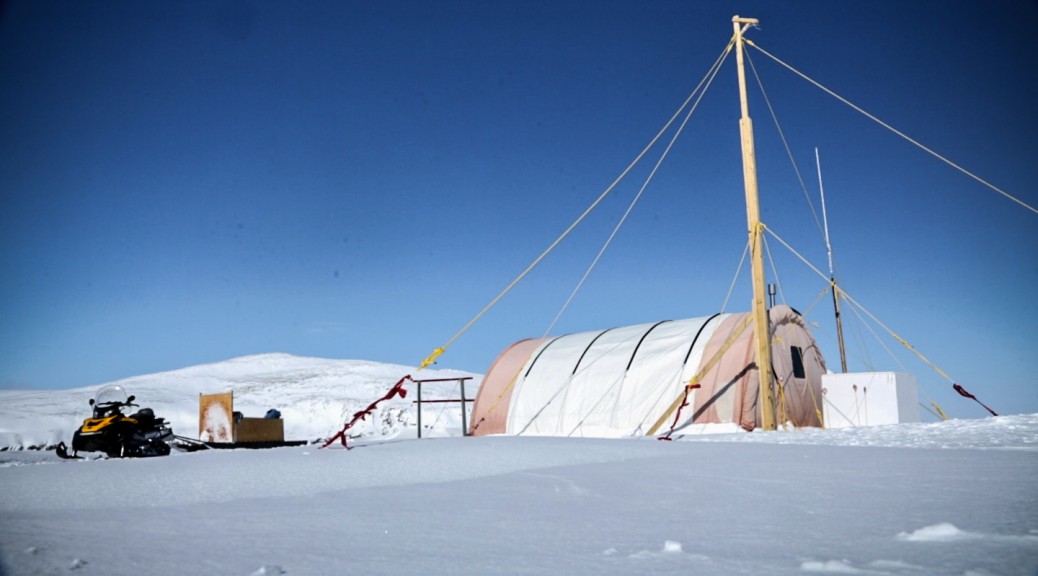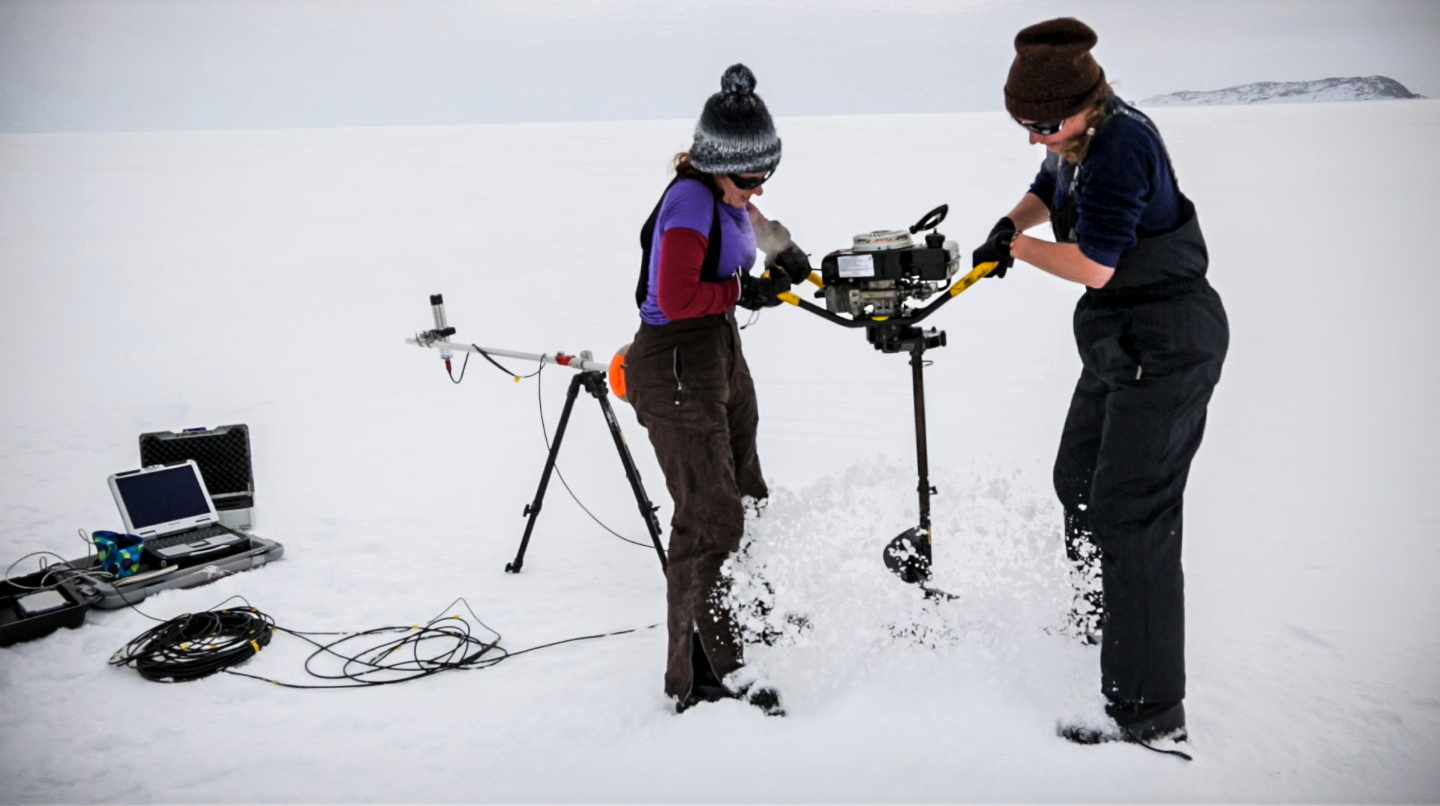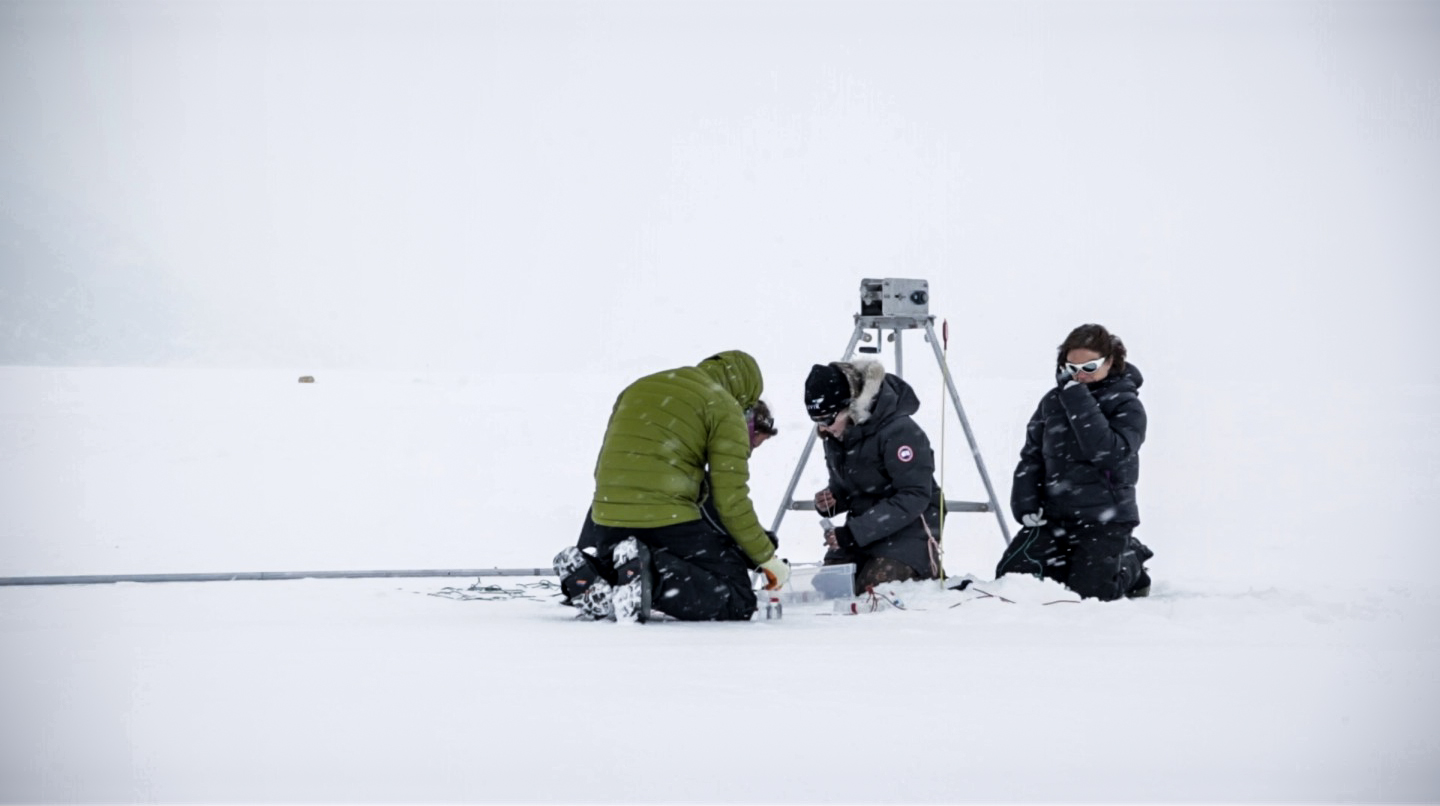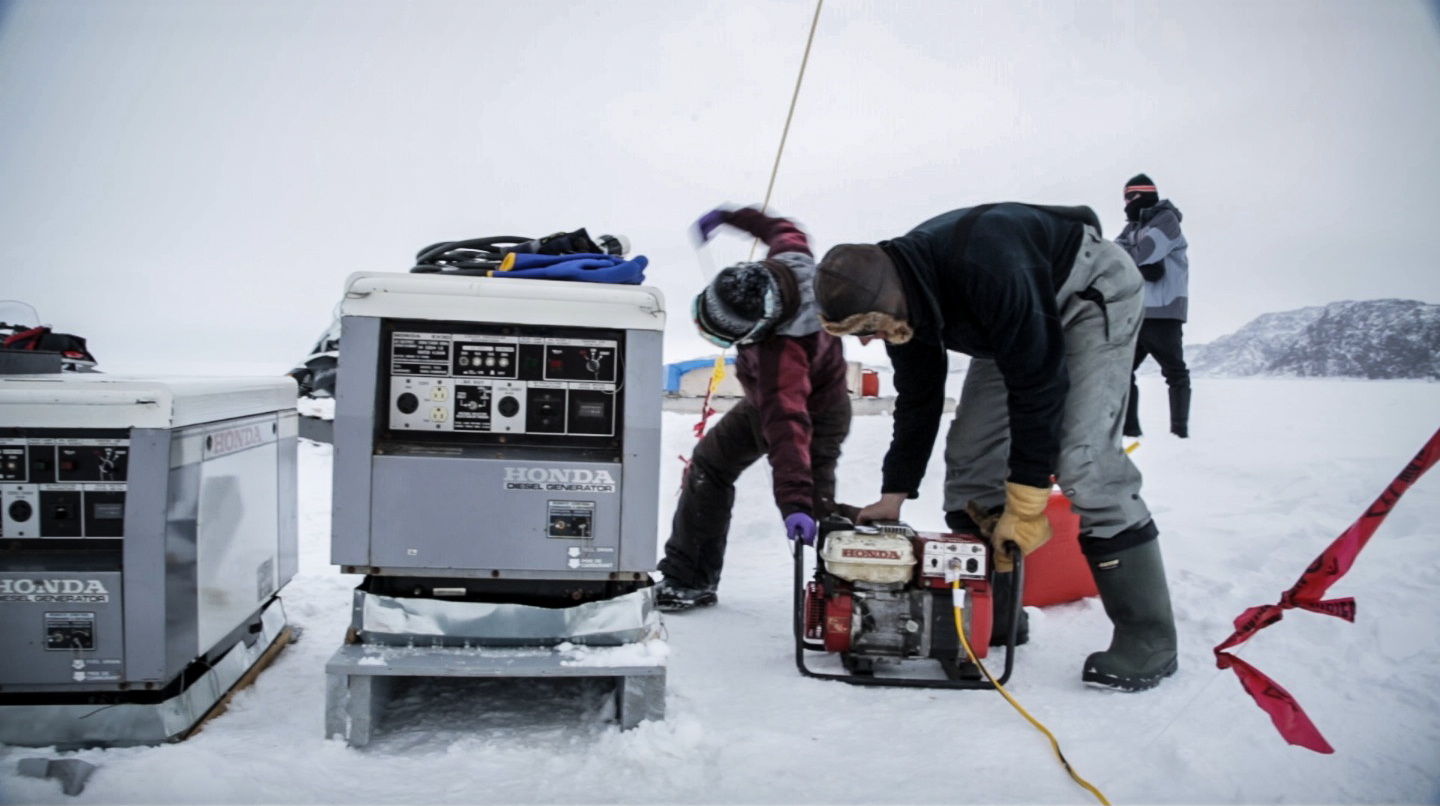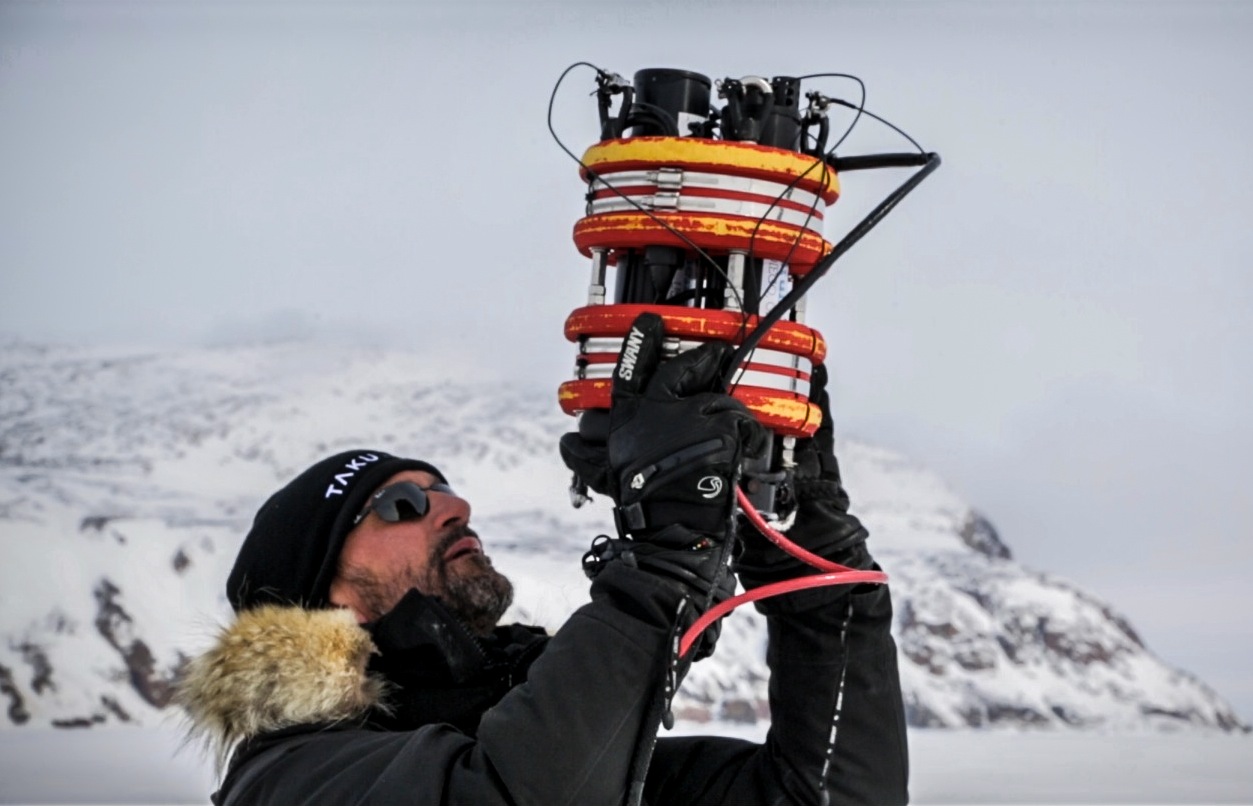Green Edge Project Campaigns
In 2015 a PSB event was monitored in Baffin Bay from its onset under melting sea ice in May to its conclusion within the seasonal ice zone in July. Members of the Green Edge project also established an ice camp near Qikiqtarjuaq, Nunavut between mid-March and mid-July.
The main scientific objective of the Green Edge 2015 ice camp was to follow the phytoplankton spring bloom (PSB) cycle, in its entirely.
In the following link you will find the database of the variables sampled in 2015: Green Edge Parameters.
Campaigns 2016
Process studies will be conducted during 2016 from an ice camp and from a research icebreaker to document phytoplankton growth, nutrient assimilation and the transfer of carbon through the food web and toward the sediments of the ocean floor. The campaigns consist of the following:
-
The establishment of ice-camp near Qikiqtarjuaq, Nunavut between mid-April and mid-July.
-
An oceanographic mission aboard the research icebreaker CCGS Amundsen along a quasi-zonal transect in central Baffin Bay in late spring.
The distribution of relevant physical, chemical and biological properties are described at various time and space scales using a fleet of profiling floats and gliders and an autonomous underwater vehicle, all equipped with a suite of physical and bio-optical sensors.
At the same time, key phytoplankton species will be isolated and grown in the laboratory under various conditions to model their response to environmental factors and to understand their succession during the spring. A coupled physical-biological model is being optimized for simulating the PSB in the Arctic Ocean and for predicting changes in phytoplankton communities and food web dynamics.
In parallel, past and present trends in the intensity and spatial distribution of the PSB are being documented using a paleoceanographic approach and remote sensing.
Finally, interviews and bilateral discussion with local Inuit communities, as well as the implementation of food security indicators, will enable the documentation of changing marine productivity from a social and health perspective and feed into an analysis of environment-human interactions.

